Tubeless tyre technology for bikes is exactly what you’d imagine from the name – it does away with inner tubes, working in much the same way as the tyre and rim of a modern car.
Tubeless is now the default option for mid-range to high-end mountain bikes and gravel bikes, and it’s becoming increasingly popular for road bikes too.
This guide covers the basic principles of tubeless and we’ve got separate advice on tubeless setup for road bikes and tubeless setup for mountain bikes.
Don’t miss our guides to the best tubeless road tyres, the best mountain bike tyres, and the best gravel tyres.
Also, if you want to optimise your tyre setup for speed, comfort, grip and puncture protection, we’ve got in-depth guides to road bike tyre pressure and mountain bike tyre pressure.
If there are any technical terms or jargon that aren’t familiar, scroll to the end of the article for a full glossary.
Tubeless does away with inner tubes. Enve
A tubeless tyre looks like a standard tube-type clincher tyre but requires no inner tube and, once ‘seated’ (seating is the process of snapping the beads into position), it forms an airtight seal with the rim.
A valve just like the one you’d find on an inner tube is fitted directly to the rim.
For the system to work, neither the rim nor tyre can leak air, so the tyre needs to fit tightly to the rim.
Sealant, which sloshes around inside the tyres, is an essential part of any tubeless setup.Russell Burton / Immediate Media
Sealant poured into the tyre or injected through the valve helps plug any tiny leaks. This sealant stays liquid inside the tyre and will heal small punctures suffered while riding.
Tubeless tyres are not to be confused with tubular tyres. Tubulars (also known as ‘tubs’ or ‘sew-ups’) are a traditional type of tyre that’s glued or taped to a tubular-specific rim. They are still widely used in road racing and cyclocross but have otherwise largely been replaced by high-performance clinchers.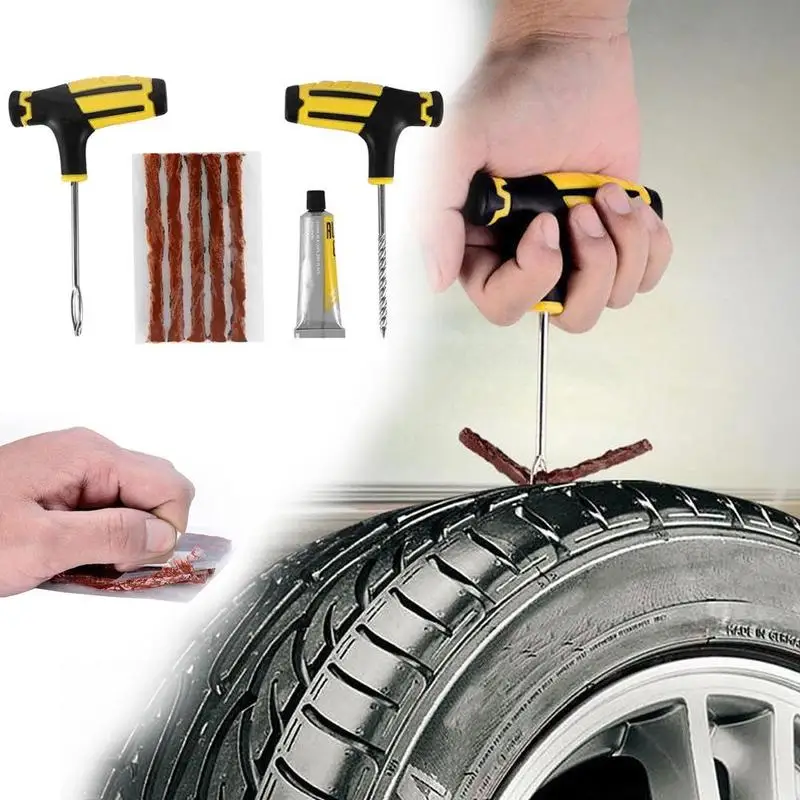
Tubeless setups suffer fewer punctures, but it’s the potential performance benefits of lower pressures that are the main advantage of the tech.BikeRadar
The number one advantage of tubeless tyres compared to standard clinchers with inner tubes is they can be run at lower pressures without the risk of pinch flats.
A pinch flat occurs when your tyre hits an obstacle (such as a rock or the edge of a pothole) and deforms to such an extent that it squashes the inner tube against the rim. This leads to a characteristic ‘snake bite’ style double puncture.
With no inner tube to trap, and sealant in the tyre to heal small punctures, a tubeless setup is much less prone to flatting overall, and so allows you to reap the benefits of lower tyre pressures.
These include greater comfort, and potentially more grip and speed too, although the relationship between tyre pressure and performance is complex so it’s hard to generalise.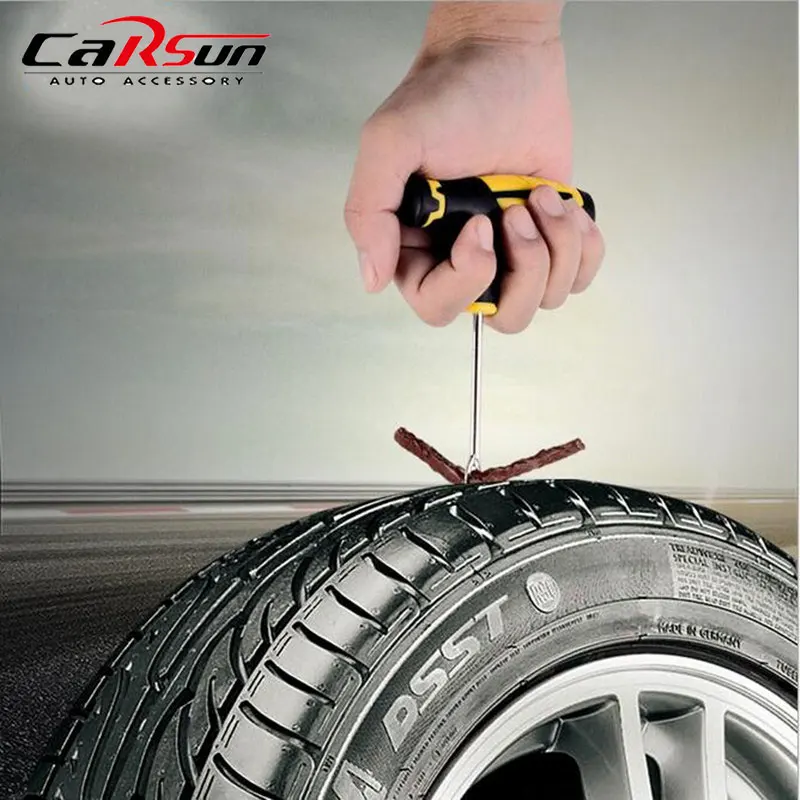
Tubeless tyres may also have lower rolling resistance and therefore be faster than an equivalent tubed setup, but again it’s hard to generalise because there are many variables and it depends exactly what you consider to be an apples-to-apples comparison.
There is a general consensus that tubeless tyres roll faster than tubulars, though, and this is driving a gradual adoption of tubeless by pro road racers.
The advantages of tubeless are pretty clear cut for mountain bikes and gravel, but the picture is more nuanced for road use – many riders feel the added complexity is not worth the benefits.
When things don’t go to plan, tubeless can be messy and inconvenient.Jonny Ashelford / Immediate Media
Tubeless setup and maintenance is inherently more onerous than using inner tubes, tubeless tyres cost more than non-tubeless tyres, and you’ll need to keep buying sealant.
Some tubeless tyres mount easily and will seat on the rim using a normal pump. However, this often isn’t the case and some tyres are tricky to mount and/or need a dedicated tubeless inflator or air compressor to seat.
However, this often isn’t the case and some tyres are tricky to mount and/or need a dedicated tubeless inflator or air compressor to seat.
Sealant can be messy and needs to be renewed periodically – typically every few months – because it gradually dries out.
Tubeless tyres also need to be pumped up more frequently than tubed tyres – it’s advisable to check your pressures before every ride.
It’s important to make sure you’re matching compatible parts when you go tubeless.Matthew Loveridge / Immediate Media
For the best and safest results, tubeless requires both tyres and rims designed specifically for the job. Tubeless tyres have stretch-resistant beads to prevent blow-off under pressure and casings that are sealed to prevent air loss.
Rims vary in design but usually have a central channel to make tyre fitting easier, and humps that keep the tyre beads locked in position. The majority also have bead hooks to aid tyre retention, but hookless rim designs are also common and some brands claim these offer an advantage.
It used to be common in the mountain bike world – and cyclocross/gravel to some extent too – to run standard tube-type clincher tyres and/or standard clincher rims tubeless.
However, with the choice of proper tubeless tyres and rims now on the market, there’s not much incentive to do this. Results with homebrew setups vary greatly, and it’s definitely not the easiest or safest option.
With a road bike, you should never run a non-tubeless tyre tubeless or attempt to convert a standard tube-type rim. The higher pressures used on the road make this dangerous and the consequences of failure can be serious.
Brands use various terms to designate their tubeless tyres. Maxxis, for example, uses “TR” for Tubeless Ready.
These terms are sometimes used interchangeably and don’t have standardised definitions.
For some brands, a tubeless-ready rim is exactly that, and all you need to do is insert a valve (which may or may not be included with the wheels), fit an appropriate tyre and add sealant.
If a wheel is described as tubeless-compatible, it’s likely you’ll also need to fit tubeless tape to seal the rim.
In the road world, it’s not uncommon for bikes to ship with tubeless-compatible wheels, but non-tubeless tyres.
That means you’ll need to fork out for a set of new tyres in addition to the other bits if you want to ditch your inner tubes – a significant extra outlay.
Hookless rims are only suitable for tubeless-specific tyres. You can usually fit an inner tube if you need to (for example, as a get-you-home measure – you’ll need to remove the tubeless valve first, of course), but you can’t fit a standard tube-type tyre because there’s a risk it will blow off the rim.
For mountain bikes, tubeless compatibility is mostly straightforward but tyre designs vary and some will be more porous (and hence require more sealant to hold air) than others.
In the late nineties, Mavic created the UST standard (Universal System Tubeless), and this is only designed to work with UST-conforming tyres and rims.
These tyres are made to an exacting specification and are heavier and more airtight than many ‘tubeless-ready’-designated tyres.
Otherwise, you should expect any tubeless-ready mountain bike tyre to work with any tubeless-ready mountain bike rim, unless the respective manufacturer explicitly forbids it.
When it comes to tyres, it’s critical you follow manufacturer guidelines to stay safe.Simon Bromley / Immediate Media
For road and gravel bikes, things are a bit messier. Tubeless standards haven’t yet fully settled down and you should pay close attention to rim and tyre manufacturer guidelines when considering a particular combination.
We’ve got separate guides on tubeless setup for road bikes and mountain bikes, but here are the basics for setting up your wheels tubeless:

There are all manner of tubeless tyre repair solutions on the market.Steve Behr
Overall, you should experience fewer punctures with tubeless. The beauty of the technology is that small punctures are healed by sealant as you ride, sometimes without you even noticing.
Larger punctures or slashes require more intervention. Your options are:
We’ve got a separate guide on how to repair a tubeless tyre.
Tubeless isn’t a panacea, but it offers meaningful advantages for many riders.Felix Smith / Immediate Media
It depends. For mountain bikes it’s an unequivocal yes. For gravel bikes it’s a yes, assuming you want to get the best out of your bike and you do actually take it off tarmac.
For road bikes, it’s a yes if you want the performance benefits or you suffer a lot of punctures, but the differences are less stark.
At BikeRadar we’re broadly pro-tubeless, but we recognise it’s not for everyone and we certainly wouldn’t recommend it for a bike that’s used infrequently because the sealant will simply dry up.
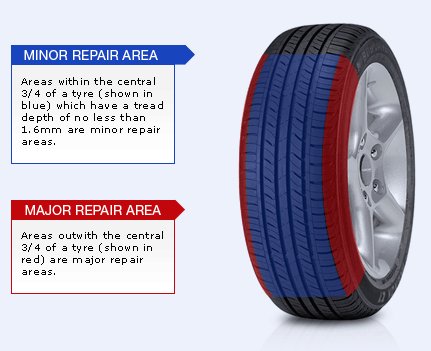 Tube-type and tubeless tyres are both types of clincher
Tube-type and tubeless tyres are both types of clincher A number of tyre makers produce UST tyres, but only Mavic and Mavic’s licensees produce UST rims
A number of tyre makers produce UST tyres, but only Mavic and Mavic’s licensees produce UST rimsMatthew Loveridge (formerly Allen) is BikeRadar's former senior writer, an experienced mechanic, and an expert on bike tech who appreciates practical, beautifully-engineered things. Originally a roadie, he likes bikes and kit of every type, including gravel bikes and mountain bikes, and he's tested a huge variety of all three over the years for BikeRadar, Cycling Plus, Cyclist.co.uk and others. At 174cm tall and 53kg, he looks like he should be better at cycling than he actually is, and he's ok with that.
Ready to say goodbye to flats? We’ll look at how tubeless tires work using a combination of tire design, rim features, and liquid sealant.
You might’ve read how a tubeless bike tire setup can help prevent punctures, allow you to run lower pressure, improve comfort and traction, and even reduce weight.
But, exactly how do tubeless tires work to provide all of these benefits? That’s what we’ll briefly explore in this article—starting with the core components.
When it comes to setting everything up, there are a total of three main components that coordinate with one another:
Let’s zoom in and take a closer look at each one.
The Difference Between Standard, Tubeless Ready, and UST Bike RimsWhen it comes to tubeless setups, rim design is where you’ll encounter the most variety. Still, from a high-level perspective, you’ll only come across three configurations:
Released way back in 1999, this is the original tubeless clincher system co-designed between high-profile manufacturers like Hutchinson, Mavic, and Michelin.
The internal edges of each sidewall feature a patented hooked design that only seals with tire beads featuring the same shape. In other words, CST tires only work with CST rims, and vice-versa (see image on the right below).
In other words, CST tires only work with CST rims, and vice-versa (see image on the right below).
Tubeless-ready rims (center image below) implement a different hooked sidewall design than UST models, although it serves that same fundamental purpose—to lock the bead securely into place without relying on a tube.
These sidewalls are also typically higher than a standard rim, with a smooth “ramp” in the center that helps the beads slide up against the sidewalls with added air pressure.
In some instances, manufacturers remove the spoke holes from the interior of their tubeless ready rims. In others, you’ll need to cover them with special rim tape (more soon).
Speaking of which, tubeless ready rims typically feature holes that are large enough to accept aftermarket valves. With standard rims, you might have to pre-drill a wider opening to make everything fit.
We’ll return to both of these topics in a second. First, though, let’s compare these features to a regular rim.
Taking a look at the standard rim’s cross section (below, left), we can see that its design is very similar to the tubeless ready version.
The biggest differences are that the standard rim’s sidewall is shorter and the flanges are rounder, which won’t create as tight of a seal. The ‘hooked’ design at the top of the sidewall is also less pronounced, and there’s no ramp in the center for easier bead installation.
Taking a look at each cross-section, we can see the design differences between standard (left), tubeless compatible (center), and UST (right) rims.Tubeless ready models also typically feature wider rim tape that fully covers spoke holes, as well as creates an airtight seal between the beads. This isn’t just any tape, though, as it’s constructed of a durable, but pliable, material that’s resistant to the sealant.
When converting a standard rim to tubeless, some manufacturers also offer rubber strips with a pre-attached valve that could better promote an airtight seal; similar to an inner tube sliced in half down the middle.
Valves are attached to inner tubes, which we’re obviously trying to get rid of here.
To address the situation, companies manufacture a variety of valves designed to work with tubeless setups. Typically, this involves a threaded Presta valve with a rubber gasket at one end, and a lock nut on the opposite side to ensure everything remains in place.
These valves also boast removable cores, which allow riders to deflate the tire and top off the sealant (more soon) when the time comes, without having to unseat the bond between the bead and the rim and repeat the process all over again.
Here, we can see DT Swiss’s tubeless rim tape in place, as well as the standard valve attached to the inner tube and the Stan’s NoTubes valve. The most significant distinction is that the latter features a rubber gasket at one end to create an airtight seal.
Tubeless or otherwise, bike tires feature one of two bead types: Folding, typically made from flexible Kevlar-based fibers, and non-folding, made from rigid steel wire.
Related: Your Visual Guide to Bike Tires
While mounting rigid beads might require a bit more elbow grease than their folding counterparts, most modern tires and rims can convert to tubeless with the right parts (e.g., rim tape to cover over spoke holes, aftermarket valve w/rubber gasket, and sealant).
However, with their patented sidewall and bead shape that’s designed to tightly lock together like puzzle pieces, UST tires take the cake when it comes to reliability. As the Park Tool site explains:
“Rims and tires must meet a certified standard to use the UST label. A UST tire will have a square-shaped bead to match the UST rim. Inside the tire carcass will be a butyl liner, basically inner tube material formed into the inside carcass of the tire body.
This extra material does make the tire heavier compared to non-UST tires.”
In fact, this seal is so reliable they point out that riders can use UST tires on UST rims, without requiring any sealant.
Compared to UST, many manufacturers advertise their tires as ‘tubeless ready’ or ‘tubeless compatible,’ although there are no overarching guidelines or standards for what this actually means. In other words, they’re merely marketing terms.
Related: How Bike Tires Are Made
As such, one manufacturer’s tubeless ready tires might feature a different—and incompatible—design with another’s.
Most manufacturers will indicate whether or not a tire is tubeless ready/compatible on the sidewall, as we can see here with the Panaracer’s popular Gravelking SK.In general, though, the beads on tubeless compatible tires feature more pronounced edges than regular tires, to help it seat in the sidewall’s flange.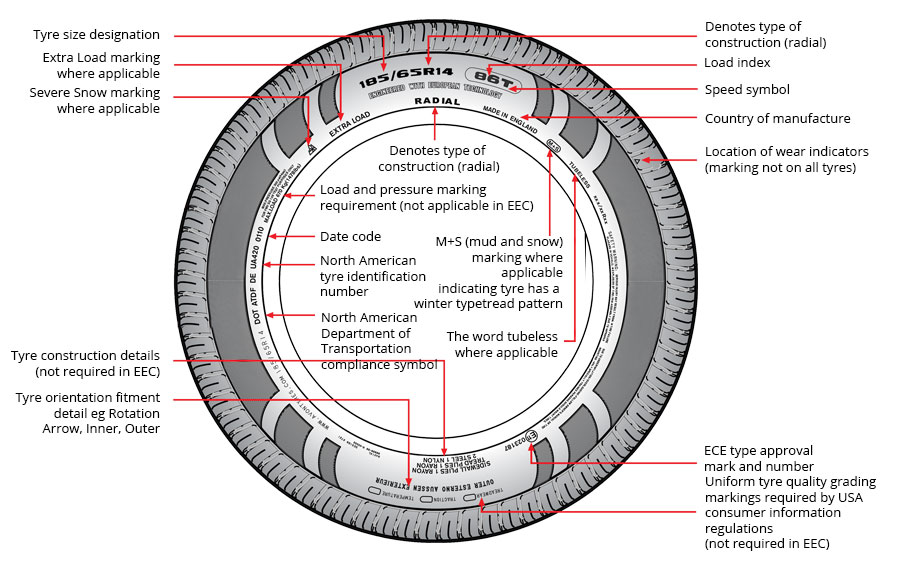 They might also boast thicker, heavier casing rubber for added puncture protection.
They might also boast thicker, heavier casing rubber for added puncture protection.
Pro tip: This doesn’t mean that tubeless tires can’t experience flat tires, though. Instead, sharp objects are more likely to become stuck in the casing and cause it to deflate more slowly, thereby avoiding catastrophic failure. This also allows greater time for the liquid sealant to start plugging the hole.
Last, but certainly not least, is the liquid sealant. Orange Seal and Stan’s No Tubes are two of the most popular brands found online and at local bike shops (although there are several others).
Each manufacturer’s sealant uses their own proprietary formula, although most implement latex as a base ingredient, along with some type of micro-sealing particles. In the instance of Orange Seal, they dub theirs ‘nanites.’
Whatever companies call them, these particles remain suspended in the sealant, quickly accumulate behind a puncture or tear as air escapes, and completely close it off within seconds.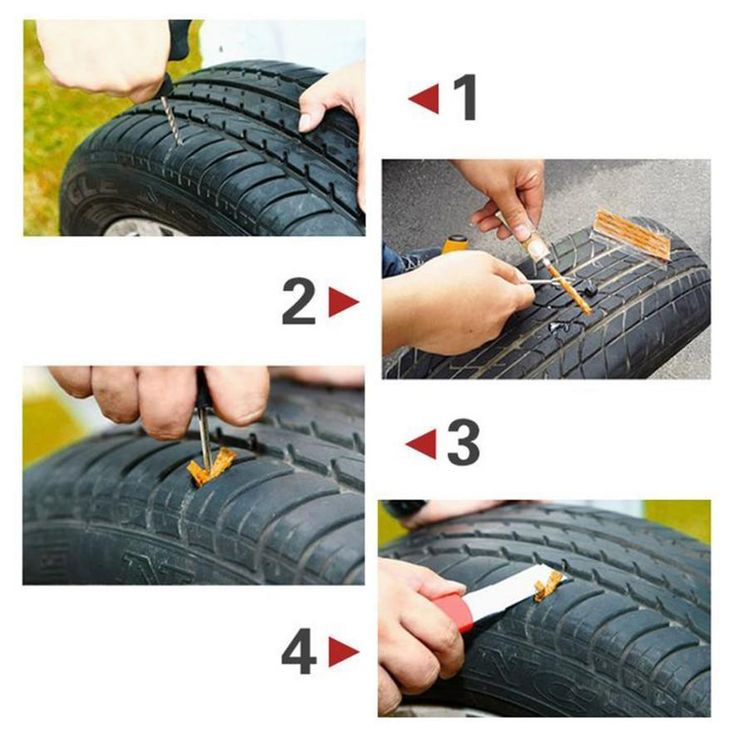 After the addition of air from a pump, this allows riders to quickly keep rolling.
After the addition of air from a pump, this allows riders to quickly keep rolling.
Related: 7 Tips For Choosing the Right Bike Pump Model
Eventually, these sealants dry and harden against the inside of the tire, though, which is one way they’re able to prevent punctures in the first place.
This also means you need to re-add sealant to the tire on a regular basis. The removable valve cores mentioned earlier allow riders to accomplish this without unseating the seal between the tire’s bead and the rim.
Tubeless bike tire sealant starts out as a liquid and uses ultra-fine particles to quickly fill large punctures and tears (up to ¼” in the instance of Orange Seal above). Some of the sealant will also dry and form a snakeskin-like texture to further prevent punctures.Now that we’ve looked at how the process works, we can see that setting up tubeless bike tires takes a bit more patience, know-how, and elbow grease than just throwing in a traditional inner tube and heading out the door.
However, the puncture protection it provides, as well as the time saved by not having to repeatedly change tubes on the side of the road or trail—in my opinion—makes the process worthwhile a thousand times over.
And, this is to say nothing of the decreased weight and the improved cushioning and traction enabled by the lower PSIs.
Keep rolling: 5 Essential Tips For Storing Your Bike Tires
Like Loading...
bike tiresreferencerim tapesealanttire guidestubeless
A tube tire for a passenger car consists of a tire and a tube with a valve fitted with a cap or key cap.
The chamber is an annular closed rubber tube with a rubber-metal valve. It is made of elastic rubber and serves only to hold compressed air.
Chambers operate under severe conditions, experiencing alternating deformations at high temperatures. Therefore, rubber for cameras should be airtight, elastic, resistant to thermal aging, not change their physical and mechanical properties at different ambient temperatures.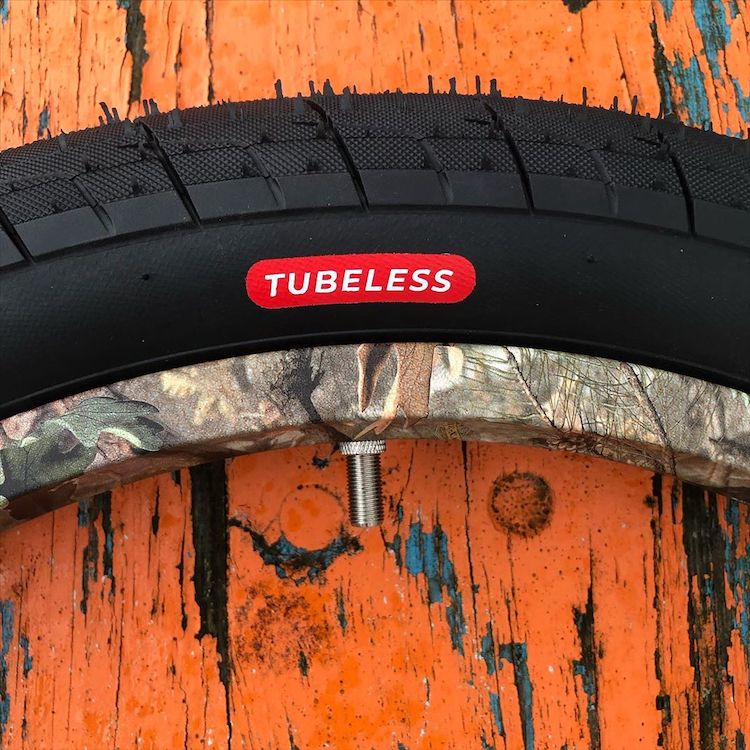 The size of the chamber must strictly correspond to the size of the tire with which it is completed. nine0005
The size of the chamber must strictly correspond to the size of the tire with which it is completed. nine0005
If we are talking about tires for passenger cars, tube tires are now a thing of the past. Foreign manufacturers have abandoned tubes, and now only tubeless tires are on the market. Cameras can be seen on domestic tire models, but not on all. Everything goes to the fact that cameras will soon become history.
A tubeless tire differs from a conventional one - it has a sealing layer 1.5...2.0 mm thick, which is vulcanized to its inner surface. It is made from a mixture of natural and synthetic rubbers with reduced gas permeability. nine0005
The tire beads are provided with a sealing rubber layer, which provides the necessary tightness in the area of the seat beads on the shelves of the wheel rim. This is facilitated by the special design of the tire beads, designed to increase the angle of inclination of the toe of the bead and the increased interference of the beads on the landing shelves of the rim.
For tubeless tyres, plug-in rubber-to-metal valves (fig.
Advantages of tubeless tires:
The main advantages of tubeless tires compared to tube tires are:
Attention:
At the same time, the use of tubeless tires requires careful mounting and dismantling. Damage to the bead flanges, especially steel ones, can lead to depressurization of a tubeless tire. If a tire is damaged, it must be repaired by specialists using equipment designed for this purpose. nine0005
nine0005
In case of loss of pressure, do not drive with a flat tire. this will destroy the hermetic layer.
The tube is not inserted into the tubeless tyre. At first glance, you increase the strength of the tire, in fact, an air cushion is formed between the chamber and the pressure layer, contributing to the destruction of the latter. If the load on the wheel is increased (for example: a sharp turn), the wheel may break.
There are complaints about tubeless tires due to weak sidewalls. I would like to say that this is not so. There are no perfect tires. The manufacturer seeks from the tire not only durability, but also comfort when driving. It is the softness of the sidewall that gives a feeling of smoothness in movement. Having made a rigid sidewall, we will be able to jump on curbs and sewer wells on our car; when driving on a flat and good road, we will feel uncomfortable. nine0005
| Worn tires are more dangerous than drunk driving A new study has found that worn tires are more dangerous than drunk driving. 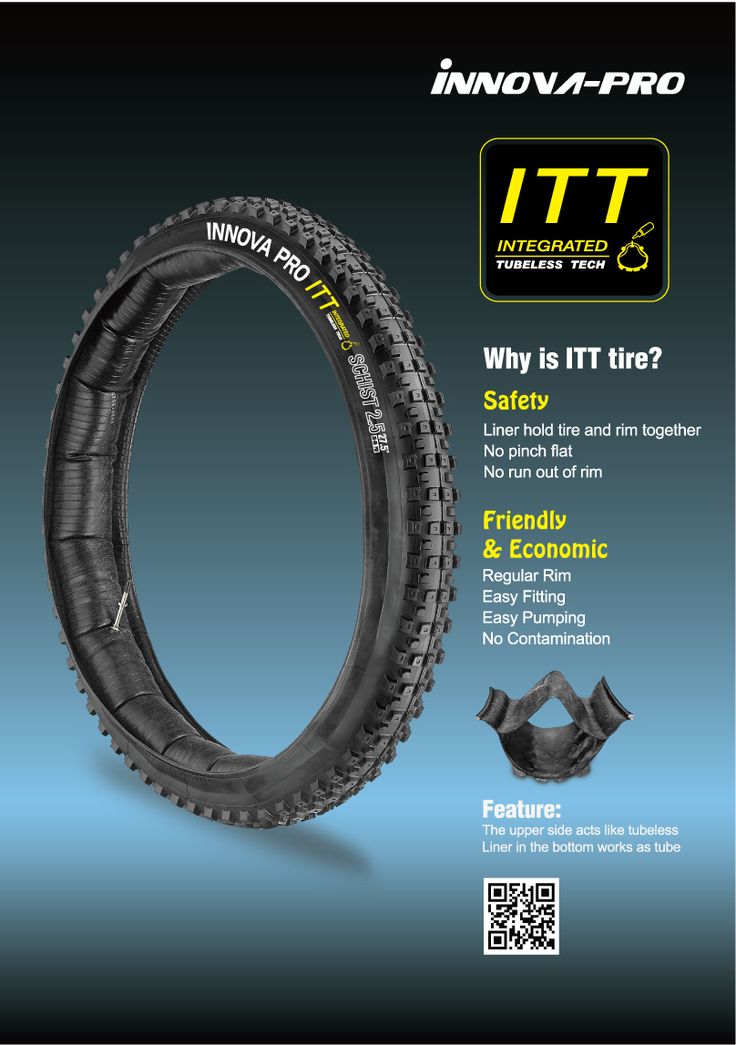 It has been found that driving a car with tires that have a tread depth of 1.6 mm can increase... It has been found that driving a car with tires that have a tread depth of 1.6 mm can increase... 26 December 2022, 11:02 | |
| Tire labels - how to read? From November 1, 2012, tires sold in countries within the European Union must have special stickers. They contain information, in particular, about the fuel.. July 11, 2022, 11:34 | |
| Causes of tire wear Tire wear is often the result of too much speed at which we move. However, there are many more factors influencing this process. Tire condition during.. July 04, 2022, 11:58 nine0055 | |
| What is the minimum tread depth allowed? The tread of a tire is sometimes analyzed in terms of appearance and shape, modern technologies implemented by the manufacturer, or performance in winter conditions.  However, the key parameter of tires in.. However, the key parameter of tires in.. June 23, 2022, 10:06 | |
| Tire deformation and side ties. What to do with them? One of the remarkable and main features of the structure of the inner part of any tire is the threads that make up the cord. For quite a long time they have a radial location at.. 08 June 2022, 10:21 | |
Tubeless tires: device, advantages over tube tires
Today, car manufacturers are equipping their models with tubeless tires. Chamber rubber is a thing of the past, now it can only be found on old foreign cars or domestic cars. If you are the owner of just such a car, then this article will help you make a choice in the direction of tubeless tires. nine0005
We will look at how chamber and tubeless tires differ, the device and features of modern tires.
Let's start with tube tires. They consist of two elements: a chamber made of a rubber compound in the shape of a torus, and a tire. The composition of the rubber should provide not only strength, but also the elasticity of the tire. When air is supplied inside the chamber, it should increase slightly in size according to the principle of a balloon. The dimensions of the tube and the tire itself must match perfectly, as the tube must fit inside without creases. nine0005
Their appearance will quickly cause the tire to become unusable. Tube tires do not last long, as their main element constantly experiences deformations under the action of high temperatures. It is unprofitable for manufacturers to spend money on creating a “hardy” camera, so even domestic manufacturers have refused such tires.
Tubeless car tires consist of one tire. A 2 mm rubber layer is applied to its inside, due to which the tire does not allow air to pass through.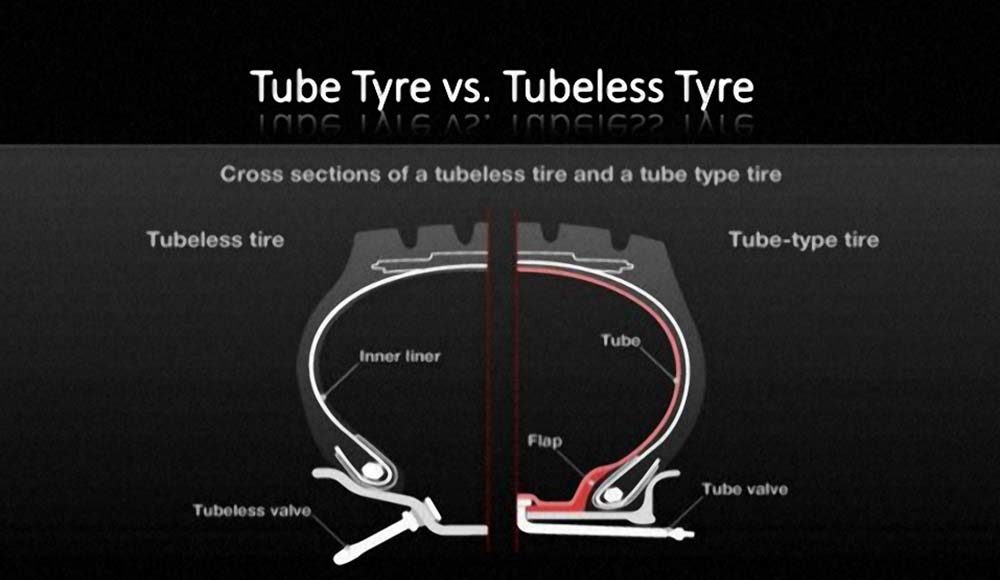 Manufacturers also thought about the joint between the rim of the disc and the sides of the tire, where air leakage is also possible. To prevent this, the board is covered with a layer of soft rubber. The principle of operation of a tubeless tire is quite simple. nine0005
Manufacturers also thought about the joint between the rim of the disc and the sides of the tire, where air leakage is also possible. To prevent this, the board is covered with a layer of soft rubber. The principle of operation of a tubeless tire is quite simple. nine0005
The tire bead sits on the rim shelf, in tubeless tires this element has a rounded protrusion, due to which the tire wraps around the bead from two sides. This solution ensures reliable tightness of the connection. Motorists know that a certain amount of air must enter the tire; in a tubeless tire, this issue is resolved with a valve that is installed on the rim of the rim. Now you know how tubeless tires differ from tubeless ones.
To understand why chamber models are a thing of the past, it is worth considering their disadvantages:

We already know how a tubeless tire works, so it's easy to see the advantages over tubeless tires. Tubeless tires have improved tightness due to soft rubber at the joints, and malfunctions associated with chafing of elements have been eliminated. After a puncture, the tire does not fail, and if necessary, you can drive with a damaged tire to the nearest tire changer. The service life of chambered rubber is much longer, since it is not subject to overheating. nine0005
The service life of chambered rubber is much longer, since it is not subject to overheating. nine0005
This is important - the disadvantages of tubeless tires and mounting features
Tubeless and tubeless tires differ not only in design, but also in the method of installation and repair. The main disadvantage of such rubber is installation, which will be problematic to do with your own hands. During mounting and dismantling, it is very easy to damage the bead flanges, which will lead to depressurization of the tire. Repair of a punctured tire should be carried out by professionals using special equipment. That is, on the way you will not be able to “patch up the rubber”. nine0005
Answer to the question “Which is better for tube or tubeless tires?” we gave. The main criterion for choosing any component is safety; if a tubeless tire is punctured at high speed, you will not lose control. If you still have chambered tires, then it's time to go to the store for new tubeless tires, they are suitable for both old models and modern ones.